Germany And Turkey Agree To Create Major Railroad Network. Make No Mistake About It, This Is About Reviving The Turco-Germany Military Alliance
By Theodore Shoebat
Turkey and German have struck a deal to build a major railway network within Turkey. As we read in a recent report from Der Spiegel:
When Sultan Abdulhamid II ascended the throne of the Ottoman Empire in 1876, the Europeans had high hopes for the young ruler. He posed as a liberal, he was pro-European and he initiated reforms aimed at saving his empire from ruin — an empire mocked at the time as the “sick man of the Bosporus.”
To boost the economy of his giant empire, the Sultan decided to launch a vast railway project, reaching an agreement in 1898 with German Emperor Wilhelm II to build the strategically important Baghdad Railway. “With German help,” the Sultan wrote, we will succeed in building the railway connection, which is important not only for economic, “but also for political reasons.”
Now, 140 years later, another gigantic railway project is being planned for the NATO member state. Currently mired in a deep financial and currency crisis, Turkey aims to modernize its railway network with the help of foreign know-how and money.
As was the case more than a century ago, Germany is Turkey’s preferred partner. Around three months ago, envoys from Turkish President Recep Tayyip Erdogan contacted the German government to discuss the plan. A consortium led by Siemens is to build new railway lines, electrify old ones and install modern signaling technology in the country. German national railway Deutsche Bahn is also slated to help with the planning of the megaproject, which will include new high-speed lines throughout the country, including tunnels, overhead lines and rolling stock. The total value of the order is around 35 billion euros.
But the offer also came attached with the request that Germany help finance the railway construction project. No decision has yet been made on whether Berlin will back the project in the form of state Hermes loan guarantees or if it will provide direct loans from the state-owned KfW banking group. But in its talks with the Turkish government and Siemens, the German government has expressed its willingness to consider providing financial support.
This piece is very interesting given how it parallels events in history to what is happening currently. When I first saw the story, I immediately thought of the Berlin-Baghdad Railway that the Germans built for the Ottoman empire. This railway system was initially used for economic and logistical reasons, but eventually, in the midst of the horrid First World War, Turkey used the railway system as a way to make the genocide of the Armenians more systematic and expedient: they used it to transport people to their deaths. Make no mistake, this is about reviving the Turco-Germanic military alliance. Moreover, the article quoted above mentions how Siemens will be leading a consortium in building the railways. Siemens is a major part of Germany’s military industry, and played a role in both Operation Gladio and the Holocaust. We will cover these subjects in the present article.
This new railway system that the Germans will be building for the Turks is also probably interconnected to the railway network being planned out by Austria, Turkey and Azerbaijan, that will link Azerbaijan, Turkey and northern Europe.
Technocrats from Turkey, Austria and Azerbaijan, gathered together and agreed on an enterprise of establishing a major railway system that will connect northern Europe with Asia. The meeting, which took place on December 13th of 2017 in the Azerbaijani capital of Baku, saw three officials from three major industrial establishments, sign a memorandum of understanding which “includes the development of a competitive, high-speed, inter-modal railway network in Europe, the CIS and China.”
This agreement will include a very competitive and high-speed railway network that will connect Europe, the CIS nations and China. The railway will network parts of Eastern Europe (Belarus, Moldova and Ukraine), the Caucasus (Armenia, Georgia and Azerbaijan), Russia, and Muslim Central Asia (Kazakstan, Kyrgyzstan, Uzbekistan and Tajikistan). It will reach all the way to East Asia, in China.
This is part of a plan to create a rail road network interconnecting Europe, the Middle East and much of Asia. It goes back to a 2016 meeting in which railway authorities of Azerbaijan, Kazakstan and Georgia, signed an agreement to create the Trans-Caspian International Transport Route (TITR), by which goods would be transported from China through Kazakhstan, Azerbaijan, Georgia to Europe via Turkey and Ukraine.
Javid Gurbanov, Chairman of Azerbaijan Railways, while in the meeting with representatives from Austria and Turkey, explained to the parties present about the potential that Azerbaijan has in the areas of logistics and transport.
He also informed the other representatives on the potential of the Trans-Caspian International Transport Route (TITR), and the North-South and South-West transport corridors, which, as we learn from a report from the Brookings Institution, “stretches from ports in India across the Arabian Sea to the southern Iranian port of Bandar Abbas, where goods then transit Iran and the Caspian Sea to ports in Russia’s sector of the Caspian. From there, the route stretches along the Volga River via Moscow to northern Europe.”
The North-South transportation corridor was established to connect Northern Europe, South-East Asia, Russia, Iran and Azerbaijan. Iran is significant here, since just this week Iranian troops expanded into Syria all the way to the Mediterranean Sea.
For all these decades, Iran wanted a sea rout. Now it has it.
As it seems, “Magog” with its ally “Persia,” now has the means to encompass their allies “the northern quarters” (the Muslim CIS nations, who are “Gomer” and “Beth-Togarmah”), bringing us closer to the fulfillment of Ezekiel 38-39.
God declares that He will “remove far off from you the northern enemy” (Joel 2:20)
It is expected that, at the initial stage, five million tons a year will be transported through the North-South transport route, and then once the capacity for transportation is boosted, this will be increased to ten million tons each year, making Azerbaijan a major international transport center.
The same meeting also discussed a new railway, the recently commissioned Baku-Tbilisi-Kars (BTK) railway that connects Asia with Europe, and that became operational in October 30 of 2017. This railway runs through Turkey, Georgia and Azerbaijan, and will act as a Eurasian bridge, being used to bring goods from China, through Kazakstan and then to Turkey, where they travel from the Turkish city of Kars into Georgia, and from there they can be distributed into the rest of Europe.
The opening ceremony for the Baku-Tbilisi-Kars (BTK) railway was attended by President of Turkey Recep Tayyip Erdogan, Prime Minister of Kazakhstan Bakytzhan Sagintayev, Georgian Prime Minister Giorgi Kvirikashvili and Prime Minister of Uzbekistan Abdulla Aripov.
It is expected that by 2020, about 300,000 to 400,000 containers will be transported through the Trans-Caspian International transport route, bringing in tremendous profit to the Azerbaijani economy.
“The most important leg of the Middle Corridor Project (to unite Europe and Asia via Anatolia) has been fulfilled with the first service of the BTK railway … Baku-Tbilisi-Kars is part of the Great Silk Road and it is important that we have implemented this project using our own funds … We are declaring the establishment of a continuous railway link from London to China.” — Erdogan
Azerbaijani President Aliyev said: “The opening of the railway is of historic and strategic significance … the shortest and most reliable link between Europe and Asia.”
This railway network was a major topic of the 33rd session of the annual Standing Committee for Economic and Commercial Cooperation (COMCEC), which is under the Organization of Islamic Cooperation (OIC). The conference took place in Istanbul in November of 2017, and was chaired by Recep Tayyip Erdogan. In fact, the whole subject of the conference was “transnational transport corridors,” that is, railway systems. The OIC is the very vehicle that Turkey is using to voice the Muslim world’s objections over the issue of Jerusalem. Erdogan is building a Muslim league through this venue (OIC), an organization that was launched after the Arabs lost Jerusalem in 1967. So how else will Erdogan revive the Ottoman Empire and reinvigorate the Muslim world, if he does not reconnect the Islamic world that was once broken up after the First World War? This can only be done by establishing this major railway network.
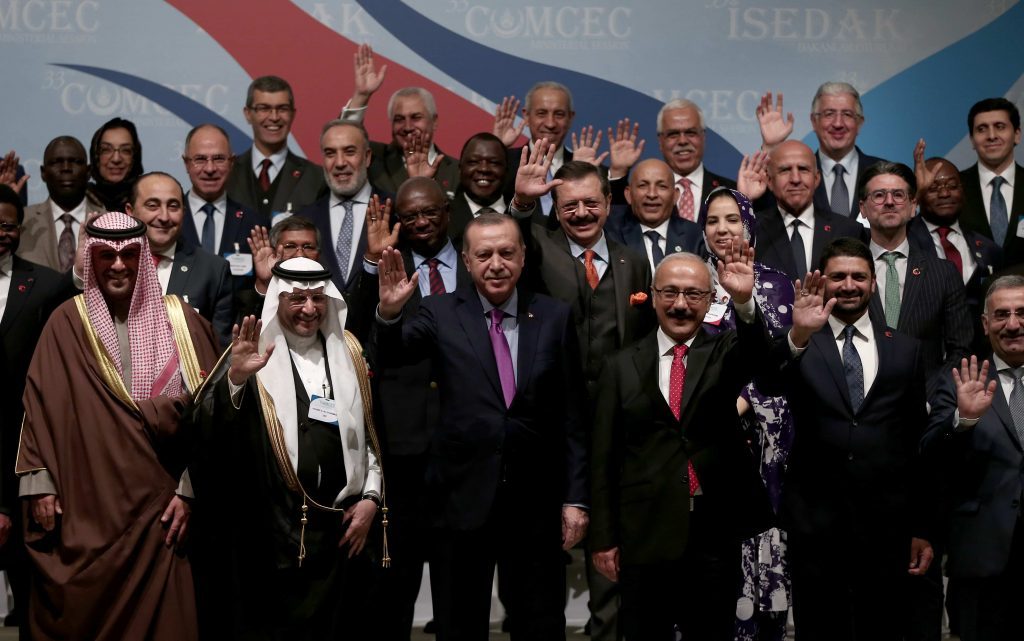
Erdogan at the 33rd session of the annual Standing Committee for Economic and Commercial Cooperation of the Organization of Islamic Cooperation
Present in the event was Javid Gurbanov, Chairman of Azerbaijan Railways, who said in his speech for the conference: “The completion of the railway`s construction is Azerbaijan’s another great accomplishment.” The most powerful and industrial of all Islamic countries, Turkey, is a key player in this establishment of this major railroad network. It is quite obvious that Turkey desires all of this type of innovation for its own power, its expansionism, and ultimately whatever atrocities it wants to commit.
AUSTRIA, GERMANY, AND EURASIA
The three companies that were in this meeting were Azerbaijan Railways, Turkish State Railways, and Rail Cargo Austria. What interest would these companies have behind this giant railway system? Well, at the surface, mere economic gain is the end goal. But, there is also a militarist interest involved in this. Rail Cargo Austria, for example, works heavily with the Austrian military in providing the trains to transport soldiers and military technology. In the official website for Rail Cargo Austria it reads:
“The partnership between the Command Support Service and Rail Cargo Austria has been in existence since April 2004. …. Every year, around 4,300 wheeled and tracked vehicles are transported to 2,500 wagons to and from training and operational areas in Germany and abroad. In 2007, 12,500 soldiers were transported to their places of work in the 330 passenger and couchette coaches of the public transport company. In general cargo transport, more than 18,000 consignments with a total weight of nearly 2.5 million kilograms were transported.”
Both Rail Cargo Austria and the Austrian military have an interest in working together in not just Europe, but in Asia. Azerbaijan is a very oil rich country. Is it possible that Austria, Germany and Turkey are aiming at seizing Baku’s oil fields? The Central Powers of Germany, Austria and the Ottoman Empire in World War One wanted Baku’s oil fields (See Brownwell, The First Nazi, ch. 7, p. 120), and this did not change much in World War Two in which the Nazis wanted to take the oil rich Azerbaijan from the Soviets.
Today, Azerbaijan is one of the five top most economic partners of Germany, and the most important economic partner for Germany in the Caucasus. The main use that Germany has for Azerbaijan is its oil. As one Azerbaijani report reads:
“Azerbaijan is one of five main economic partners of Germany, Michael Kindsgrab, Ambassador of Germany to Azerbaijan, said in Baku on October 3.
The diplomat said Azerbaijan is the most important partner of Germany in the South Caucasus and alongside other European courtiers, Germany also use the country’s oil and gas.”
There is a pattern here. In both World Wars, Germany wanted a Europe ruled by a Central European industrialism, and they wanted Azerbaijan’s oil. In the 1950s, when the European Union was birthed (known then as the European Economic Community), it began as it is today: with a dominating Central European technocracy where the Bundesbank is king. The power of the German banks could be witnessed in how it managed the financial crises of 2010.
After the 2010 financial crises erupted in Europe, Ireland’s banks needed to get bailed out. The Irish government gave the banks promissory notes (or IOUs). In 2014, the European Central Bank told the Irish banks that it could swap those notes for government bonds, and receive the interest of those bonds, thus stimulating the economy. The banks, in turn, would pay back the Irish government in dividends. The German central bank, the Bundesbank, was not having any of this. They wanted the Irish to remain in debt. The bankers in Frankfurt demanded that Ireland’s central bank unload the bonds that it got, and sell them to private bankers who would eventually, in the words of Varoufakis, “collect the interest from the Irish taxpayers.” (Varoufakis, And The Weak Suffer What They Must?, ch. 6, pp. 182-183)
The Bundesbank was doing these types of abuses in Greece, Italy and Spain. The Germanic northerners want the Catholic and Orthodox countries to be in debt, that is, enslaved to them. And isn’t it interesting that all the countries that got hit the hardest were either Catholic or Orthodox? Its not much of a coincidence considering that the conflict between the North and South in Europe has been happening for centuries (even before the Reformation).
With a Central European technocracy dominating Europe, it is obvious that the Germanians’ aim regarding Azerbaijan is oil. In fact, just last month it was reported about how Germany is fixated on getting oil from Azerbaijan after Trump berated Germany as a ‘slave of Russia’ for purchasing Russian oil. As Reuters reports:
Castigated by U.S. President Donald Trump as relying too much on Russian gas supplies, German Chancellor Angela Merkel heads to Azerbaijan this week to discuss the development of a southern pipeline to deliver gas to Europe from the Caspian.
The visit underscores Merkel’s openness to finding alternative sources of affordable gas even as she remains committed to the Nord Stream 2 pipeline, which will carry gas directly from Russia under the Baltic Sea to Germany.
“We have a big interest in further developing the Southern Corridor,” a senior German government official said.
“This is part of the EU’s diversification strategy of getting gas from other regions, not just Russia, to Europe.”
In Baku, Merkel will discuss energy issues, including improving the infrastructure to help transport gas from Azerbaijan to Europe via Turkey, officials said.
Azerbaijan looks set to play a crucial role as it plans to launch the second stage of a gas pipeline from the vast Shah Deniz field to Europe.
So this is exactly why the Germans are making such an investments into the creation of railway networks in the Near East: it is to further deepen the transport systems that connect Europe and Asia in order to expedite oil imports to Germany.
Asia, as it was in both World Wars, is at the center of Europe’s focus. You cannot have a war, and nor can you have a genocide, without oil. The veins of the antichrist killing machine will run with the black oil of the earth, to which they will offer the blood of the innocent as a sacrifice to the gods of industrialism. Nothing has ever changed, from Babel’s pitch (petroleum tar), to the coming Mystery Babylon, the goal is to make “our name great,” upon mountains of dead bodies.
In 2008, representatives from Rail Cargo Austria, and the Austrian military, had a meeting in Rothschild Castle in Reichenau an der Rax, to discuss further cooperation between the Austrian military and the railway company, in both Europe and Asia. In this meeting, Major General Bernhard Bair, spoke of the importance of “Provision for the Austrian Armed Forces” and logistics, both at the European level and in an international environment.
Friedrich Macher, who was then managing director for Rail Cargo Austria, made a statement at the meeting that made an interest in Asia much more explicit: “The liberalization of the railway market and the opening of the East are decisive for the RCA business strategy, which increasingly requires cooperation and partnerships.”
The Austrian armed forces’ and Rail Cargo Austria’s strong geopolitical interest in Asia, is reflective of what is being discussed within the Austrian military’s political realm. In the official website for the Austrian armed forces (the Bundesheer), it reads some quite telling words on the position of Asia regarding the control of the world:
“The Cold War produced two Koreas, two Chinas and two Vietnams. Now, with growing competition among major Asian players and the rise of regional powers, Asia could determine the new world order.”
This is similar to the words of Austrian military geopoliticist, Erich Reiter, a member of the nationalist pan-German Freedom Party, who wrote:
“These are theories, and Nicholas Spykman, for instance, who carried MacKinder’s analysis further, formulated that whoever controls the Eurasian rimland rules Eurasia, and whoever rules Eurasia controls the destiny of the world.”
Reiter also wrote: “Control over Central Asia is still of geopolitical importance”. With pan-Europeanism becoming more and more intense (the Freedom Party is now the second largest party in Austria), and with Asia on the crosshairs, it is easy to see a major war breaking out in both Europe and Asia.
And if you think that pan-Eurasianism is some sort of liberal idea, then remember that the Central Powers were interested in expanding into Asia. General Ludendorf, who led Germany in World War One, had dreams and plans of invading India. Control over Africa and Asia for natural resources, be it oil or minerals, is a great aim of both Turkey and Germany. Hence why both Turkey and Germany are making their presence, both militarily and politically, in African countries like Somalia, Sudan (both North and South), Eritrea, Mali, etc., shedding more light on the Bible’s emphasis on Cush as a partner of Gog’s coalition. War is coming, and it will take place in Asia, Europe and Africa.
RAILWAYS AND GENOCIDE
With Turkey, Austria and Azerbaijan developing complex and very large scale railway systems in Europe and Asia, and with nations speaking of war and preparing for war, in the midst of the fact that the world experienced the most bloodiest of conflicts just decades ago, it is all too obvious that humanity is about to be torn apart by another devastating war.
In the midst of war, governments and industrialists take advantage of the heat of nationalist frenzies, and orchestrate genocides and atrocities. This is what took place in the Ottoman Empire during the First World War, in which the Ottomans conducted the extermination of countless Armenians. But how did they carry out such an atrocity so quickly? A railway system.
Genocide is impossible without industrialism.
What interest would Turkey have in this gigantic railway network? Well of course economic interests come into play. But, given Turkey’s history of imperialism and genocide, this railway network would, ultimately, be used for its military industrial complex, expansionism, and other evils, maybe even transporting slaves for labor, or even victims for extermination. None of this would be surprising at all.
Look at who is behind this colossal railway network: Turkey, Azerbaijan and Austria. Here we see a Eurasian, or a Turkish and Germanian cooperation. There was also a Turkish and European collaboration in the transportation of Armenians to their deaths. We are speaking of the Berlin-Bagdad railway, which would be the foundation for Turkey’s current railway system.
The Berlin-Bagdad railway was funded, engineered and constructed by Deutsche Bank, and the German company Philipp Holzmann AG. While the Ottomans did the killing, the Germans provided the technology by which the extermination of the Armenians could be done efficiently, and that is the use of the railway to transport large amounts of people to death fields.
It was in the spring of 1915, when the Committee of Union and Progress, the ruling party of Turkey that was ran by the nationalist Young Turks, commenced the extermination of the Armenians within the Ottoman Empire. The inhabitants of the town of Zeitun were the first to be transported. They were crammed inside of the train, with eighty-eight Armenians being jammed into each freight car. At times pregnant women gave birth in these containers of death, and the Ottoman guards would simply grab the new born and throw it out of the train.
The Ottoman government kept meticulous attention on the numbers of Armenians being moved in the trains, with Talaat Bey, the minister of the interior, constantly receiving messages on how many Armenians were being deported, and on which location they were at.
The Berlin-Bagdad railway was efficient in moving large amounts of people, in a short amount of time, so that they could be annihilated. On October 9th and 10th, 1915, 11,000 Armenians in Konya, were transported by train; between October 13th and 16th, 9,600 Armenians were deported to their deaths by train. In the following three days, 5,000 Armenians were sent out of Konia, and another 4,854 in just the next two days. On October 23rd, 1,050 Armenians were crammed into fourteen train cars and shipped out to be executed.
As we learn from the historian Richard G. Hovannisian, almost all of the railway stations for the Berlin-Bagdad railway were “detention camps where thousands died.” Right next to the railway station in Konia, the Ottomans built a concentration camp to imprison their victims. And this was not the only one. This was just one concentration camp out of a series of camps that were built alongside the railway heading towards the Syrian desert.
Armenians were kept in these camps until they were moved on to the next camp. Thousands would die in these camps just from the sheer exhaustion of having to march long distances between camps. Thousands more died in these camps from disease. Ottoman authorities would at times cruelly dehydrate the Armenians by deliberately withholding water. Many times camps were attacked and the people butchered.
These concentration camps were not small either. The camp in Katma, for example, would hold 40,000 people. The camp near Osmanieh imprisoned between 20,000 and 70,000 victims.
In November of 1915, the Berlin-Bagdad Company was given orders to move 50,000 Armenians from Katma to the Ras-ul-Ain camps to be slaughtered, starved to death and even buried alive. The German vice-consul, Hermann Hoffman reported that in Tell Ermen, “Everything had been destroyed, except for 15 to 20 people who were able to flee. Vice-Consul Holstein even discovered remains, such as dismembered heads and limbs, in the church.” (See Gust, The Armenians Genocide: Evidence from the German Foreign Office Archives)
But this mass killing of people in such a short amount of time, would not have been possible without the German engineers and bankers who produced and financed the technology by which to kill in such high numbers. While there were Germans who were disturbed by the killings, and who even made efforts to stop it, such as Franz Gunther who reported on how the Turks were slaughtering with “bestial cruelty”, the German government did much work to cover up the crimes.
During the summer of 1915, the German Foreign Office made efforts to deny the genocide that was taking place. Ernst Prince of Hohenlohe-Langenburg, who represented the German diplomate Hans Freiherr von Wangenheim, wrote that while the slaughter was happening, Germany must keep the Ottomans as allies and thus do nothing for the Armenians. “All of our thoughts with regard to the decisions of the Turkish government to eliminate the indigenous Christians in the eastern provinces”, he wrote, “have proved to be ineffective. Therefore, for the time being I must refrain from taking further steps, particularly in favour of the Armenians.”
Hans Freiherr von Wangenheim, in a meeting in Constantinople with the American ambassador, Henry Morgenthau, explicitly said that he would do nothing to help the Armenians, stating as his justification: “Our aim is to win the war.” He also said: “Germany is not responsible for this”. Wangenheim’s callousness to the suffering of the Armenians was not entirely based on a cold pragmatism for German interests, but also on a social Darwinistic mentality. Wangenheim said:
“I think the Turks are entirely justified. The weaker nation must succumb . . . I do not blame the Turks for what they are doing to the Armenians . . . They are entirely justified”
His words, “the weaker nation must succumb,” echo the wicked as they are described by the Book of Wisdom: “But let our strength be the law of justice: for that which is feeble, is found to be nothing worth.” (Wisdom 2:11)
This violent sentiment of German elites towards the Armenians was widespread enough that Germany did not care about the evils being done by their Ottoman ally. Hans von Humann, the German naval attaché in Constantinople, and a very close friend of Enver Pasha, one of the main orchestrators of the genocide, said regarding the killings: “because of their conspiracy with the Russians, the Armenians are being more or less annihilated. This is hard, but useful.”
Enver Pasha also shared this Darwinistic view of Armenians, and Greeks, calling them “unreliables,” worthy of only being put into work camps. Once the Ottoman Empire joined Germany in the First World War, Pasha confided to von Humann that “all the unreliables: Greeks, Armenians, etc.,” would be put into amele taburları or labour battalions.
Nationalism played a large role in Turkey’s involvement in the war effort, with Pasha telling von Humann that it would “advance the people’s national identity,” a motive that would fuel the Armenian genocide, since the Ottoman Young Turks desired for a “homogenous” society.
Pasha praised Germany, stating that he witnessed in the country “the tireless willingness of all to sacrifice, commitment of the whole person to the fatherland.” Pasha wanted Turkey to become more like Germany because, as he saw his country, everyone thinks of themselves, “no one of the fatherland.”
The effort to cover up for the Ottoman atrocity was also taken by the German chancellor, Theobald von Bethmann-Hollweg, who wrote: “The proposed public reprimand of an ally in the course of a war would be an act which is unprecedented in history … Our only aim is to keep Turkey on our side until the end of the war, no matter whether as a result Armenians do perish or not.”
Germany, in the upper echelons of its power, was in favor and in support for the transportation, through its Berlin-Bagdad railway system, and extermination of the Armenians. There is a 1916 letter from Paul Wolff Metternich, German ambassador to Constantinople, addressed to the Chancellor, in which he expressed Germany’s support for Turkey’s relocation, and liquidation, of the Armenian population:
“The Turkish government supports the view that resettlement measures were justified in the entire country for military reasons. Both the present government as well as those that follow, unless there is a complete change in the system, will hold this view doggedly.”
On the letter there is a postscript written by Otto Goppert, who was in charge of economic matters at the German embassy in Constantinople, stating: “resettlement measures were not only justified in the eastern provinces, as we have acknowledged, but also in the entire country”, showing that the support for the Armenian Genocide was not limited to a few politicians, but encompassed the government as a whole.
The letter was then signed by Konstantin von Neurath, a German diplomat in Constantinople who would later serve as the Foreign Minister for the Third Reich. One cannot talk about the Armenian Genocide without talking about Germany’s role in it.
People like to make the Armenian Genocide out to be that a bunch of Turks decided to kill people, and that it was just them who did it. We tend to isolate the Turks when it comes to the Genocide. But this perspective is missing half of the picture. You cannot have genocide without technology and innovation. The extermination of peoples required trains, and who built them? The Germans, and they were just as responsible for the Genocide as were the Turks. In the words of historian Wolfgang Gust, “the German Empire was jointly responsible for the genocide because it approved of the deportation.” (Gust, The Armenians Genocide: Evidence from the German Foreign Office Archives, p. 91)
When the Ottomans justified their extermination of the Armenians, they did so by simply stating that it was done for “military reasons.” The Germans adopted this term and used it when they themselves justified the Armenian Genocide. “It must also be admitted”, wrote Paul Wolff Metternich, “that the evacuation of parts of the Armenian population was justified by military interests and can be considered as having been an act of self-defense”.
But the extermination of the Armenians was not void of religious leadership.
Siegfried von Lüttichau, the protestant minister for the German embassy in Constantinople who would later join the Nazi Party, also supported the deportation of the Armenians, stating: “The deportation was a military measure. The reason for the measure is known to everyone and certainly justified … But the annihilation of the deportees, which succeeded only too well and too thoroughly, was a political measure by the government.” (Ibid)
Why would the Germans adopt the same excuse as the Ottomans? Its because they were both co-conspirators behind the slaughter of the Christians. The Germans, people who were once in the Church, then became those who “deal wickedly against the covenant” (Daniel 11:31), and who “have forsaken the covenant of the sanctuary.” (Daniel 11:30) That is, they rejected the Catholic Church and her sacraments, and began to persecute the saints.
Both Germany and Turkey hold the same goblet of the blood of the saints. The Germans built the trains and the railway networks, and all that was left was Turkish brutality, and a systematic extermination was underway. When one reads the history of genocide done by Germany, it becomes clear that the Holocaust was business as usual. With the German extermination of the Herero people in Africa, with its instrumental role in the Armenian genocide, it makes sense to say that the Nazi Holocaust was nothing to the Germans, but rather, it was the continuation of ‘business as usual.’
At the end of the day, the murderers who conspired and committed this great crime were merely wide-scale thieves. When the Armenians were deported, their names, professions and properties were recorded. This was because the Ottomans wanted to loot their belongings. After they were exterminated, their properties were auctioned off. On August 29th, 1915, the Interior Ministry sent out a message calling on authorities to auction off Armenian properties for the benefit of Turkish populations.
In November of 1916, the Interior Ministry ordered that a list be made, documenting “Armenian merchants from provinces who have not been transported to other regions,” including information on whatever lands they may have owned, their trading firms, factories, and the value of their belongings. (See Ugur Ungor and Mehmet Polatel, Confiscation and Destruction)
But this thievery was not without European collaboration. While it is true that there were people within the Deutsche Bank who sympathized with the Armenians, it is also true that a sum of five million Turkish lira (about 30,000 kilograms worth of gold) was deposited by the Turkish government at the Reichsbank in Berlin. This huge amount of money was, in the words of historians Ugur Ungor and Mehmet Polatel, “probably the aggregate of all Armenian bank accounts as well as the total sum gained from the liquidations in the provinces.” (Ugur Ungor and Mehmet Polatel, Confiscation and Destruction, p. 66)
While sympathy for Armenians amongst German bankers should not be ignored, the reality is that the Deutsche Bank as a whole cared more about protecting the German business world than anything else. When the Ottomans slaughtered the Armenians, they eliminated people who owed payments to manufacturing companies, and these companies wanted to get paid.
Manufacturers contacted the German government, complaining that they did not receive payments from Armenians who had gotten goods from them (this is because they were deported and murdered). Creditors feared that they were going to lose all the money they had lent to Armenians who were now dead or reduced to terrible conditions. The Deutsche Bank suggested to the Ottoman government a set of measures to compensate the creditors (a proposition that they refused).
The Deutsche Bank admitted that these measures were “only in the interest of the self-preservation of the creditors of Armenians”. The office of Germany’s chancellor agreed and strongly pushed for the “safeguarding of the threatened interests of the German business world”. (Ibid) While the German bankers knew that real atrocities had been done, their priority was not a humanitarian effort, but protecting German industrialism.
After the genocide of the Armenians, Deutsche Bank took in much of the huge fortunes of Talaat Pasha, one of the main orchestrators of the atrocity, as we read in an article from the New York Times:
“There are stories that the Deutsche Bank has his [Pasha’s] fortune of more than 10,000,000 marks in safekeeping.”
The mass murderer’s wealth was protected by elitist bankers, because while it all said and done, the ultimate goal is not humanitarianism, but profit at any cost. The fact that the sum of the wealth in Armenian bank accounts, were put in the German Reichsbank, is evidence enough showing collusion between the Ottoman Empire and German bankers and technocrats. The German banks would do the same thing to Jewish owned bank accounts in the Holocaust. Business as usual.
One of the end goals of the Nazis of our time is a pan-European technocracy, centered around a Central European powerhouse. The Nazis themselves envisioned a pan-European government, with Germany being the dominant power. The Austrian Nazi, Arthur Seyss-Inquart, who signed the Anschluss (which allowed Nazi Germany to annex Austria), once declared:
“Above and beyond the concept of the nation-state, the idea of a new community will transform the living space given us all by history into a new spiritual realm … The new Europe of solidarity and cooperation among all its peoples, a Europe without unemployment, without monetary crises, … will find an assured foundation and rapidly increasing prosperity once national economic barriers are removed.” (See Varoufakis, And The Weak Suffer What They Must? ch. 7, p. 202)
This vision of Paneuropa, was strong within Nazi thought, but it was perpetuated after the war, when the idea of Paneuropa was complemented with the idea of Mitteleuropa. Both are aimed at the same goal, and that is a pan-European state with the center, or Central Europe — specifically Germany — being the dominant part. This concept of Paneuropa and Mitteleuropa were intended to protect Central Europe from Russia in the East, and the Anglosphere in the West.
Moreover, Paneuropa and Mitteleuropa both believed in the view that Central Europe would be one giant industrialist and technocratic center, dominating Europe, which is actually the case in Europe today, with Germany leading in industrialism in the continent. Such beliefs were championed by Richard von Coudenhove-Kalergi, the German Japanese pan-Eurasianist and pan-Central Europeanist, who said that Europe “supersedes democracy” and that democracy should be replaced by a “social aristocracy of the spirit.” (Varoufakis, And The Weak Suffer What They Must? ch. 2, pp. 46-48)
The elites, those of the aristocracy, or the technocracy, are only bringing the world into war.
SIEMENS, GLADIO AND THE HOLOCAUST
Bosch and Siemens is the largest manufacturer of home appliances in all of Europe, and one of the most major companies of this sort in the world. And do not think that Bosch and Siemens is just interested in making toilets or washing machines; such industries always have a militarist interest.
It is not coincidental that BSH Bosch and Siemens Home Appliances Group has their headquarters right next to the University of the Federal Armed Forces in Munich (Universität der Bundeswehr München), which is one of the two universities for the German armed forces (Bundeswehr). Both the Bundeswehr and the Bosch and Siemens company partner in research. According to the SAGE Encyclopedia of War:
“The University der Bundeswehr München is located in Neubiberg in the city of Munich. A large part of the University der Bundeswehr Munchen campus in the former Air Force Officer School, which includes a military airport. Today, the old runways are used for scientific testing of vehicles.
Various multinational corporations such as Siemens, Bosch, EADS (umbrella company that owns Airbus [the very company that just made a contract with Turkey] and Eurocopter), and Infineon Technologies have headquarters or industrial facilities that directly neighbor the university campus. It is not unusual in Germany to have partnerships or agreements between universities and companies. In fact, in the case of the Universitat der Bundeswehr Munchen, this close proximity facilitates research cooperation and research clusters.” (Brackets mine)
Siemens was heavily involved in NATO’s Gladio, an operation in which neo-Nazis and other nationalists were recruited by the CIA and numerous European secret service agencies, in order to create paramilitaries to supposedly fight the Soviet Union.
But it wasn’t just this. It was during and under the Gladio operation that the US armed Turkey and made it the second most armed country in NATO, supposedly to fight the Soviet Union. Thus, Siemens’ involvement with Turkey, German militarism and pro-Nazi NATO conspiracy, are all signs of a nefarious and dangerous company.
In the 1950s, NATO created the ACC, or the Allied Clandestine Committee, to — according to a Belgium report — coordinate paramilitary and military groups (called “stay-behinds”) in “Belgium, Denmark, France, Germany, Italy, Luxembourg, Holland, Norway, United Kingdom and the United States”.
In order to make communication between these networks more efficient, the ACC made a contract with AEG Telefunken to develop the Harpoon radio transmitter, for a total of 130 million German Marks. With the Harpoon radio transmitters, stay-behind teams were able to send and receive encrypted radio messages over a distance of 6,000 kilometers. According to the Belgian Gladio agent, Michel van Ussel: “The only material element which all stay behind members of the ACC shared is the famous Harpoon radio transmitter …. this system was regularly used for the transmission of messages between the radio bases and the agents (above all during radio exercises), but was above all destined to play a central role for the transmission of intelligence in case of occupation.” (Ganser, NATO’s Secret Armies, ch. 2, pp. 30-31)
The Harpoon radio transmitters were created by AEG Telefunken, a joint venture of Siemens & Halske, which would simply merge with Siemens AG. What makes this even more interesting is that Siemens, while it made radio transmitters for neo-Nazi networks working for NATO, it has been making radios for the German military.
According to one 2006 German report, “technology companies Siemens and IBM have received from the Bundeswehr a multi-billion dollar contract for the modernization of communications equipment of the armed forces. The ten-year contract has a volume of 7.1 billion euros, said the companies and the Ministry of Defense on Thursday. The Budget Committee of the Bundestag had approved the contracts between the Bundeswehr and the companies a good two weeks ago.”
On top of developing radio transmitters for neo-Nazi stay-behinds under Operation Gladio, and building communication technology for the current German military, Siemens was a major backer for the Third Reich technocracy, enslaving hundreds of thousands of people in their slave labor camps, including one in Ravensbruk where many Polish women were experimented on. As one article on Siemens details:
Siemens was a leading corporate participant in Hitler’s “death through work program;” with slave labor factories at the following death camps: Auschwitz, Buchenwald, Flossenberg, Gross Rosen, Mauthausen, Neuengamme, Ravensbruck, & Sachsenhausen.
In late 1944, at the height of World War II, Siemens’ total workforce of 244,000 included 50,000 people who had been put to work against their will. The overall number of people who served as forced labor at Siemens during the war years was even higher.
The major private firm that used slave labor at Ravensbrück was the Siemens Electric Company, today the second largest electric company in the world. In a separate camp adjoining the main one, Siemens “employed” the women to make electrical components for V-1 and V-2 rockets. The women usually worked for twelve hours a day, under conditions of extreme exploitation. Women also worked at some of the most difficult tasks, including construction. They were used like animals, with twelve to fourteen of them pulling a huge roller to pave the streets.
In addition to the profitable business of working people to death at Nazi concentration camps, Siemens did quite well in the so-called “Aryanization Program,” which was essentially the expropriation of Jewish businesses for resale at bargain basement prices to approved German companies
Siemens general director during the Holocaust, Rudolf Bingel, was one of the senior German business leaders active in the notorious Himmlerkreis, the Circle of Friends of Reichsfuhrer SS Heinrich Himmler. The companies represented in Himmler’s circle became pacesetters in Aryanization, exploitation of concentration camp labor, seizure of foreign companies in the occupied territories, and similar business ventures that depended on SS cooperation.
If Siemens was a major backer of the Nazis and deep within the inner circles of the Third Reich, and if Siemens helped Nazis after World War Two, what do you think their agenda is in helping the current day German military, and in collaborating with Turkey? What would Siemens do if another reich arose? And if God Himself said that the leopard does not change its spots, and the Germanians built the super cannon for the Ottomans, the answer is obvious: genocide.




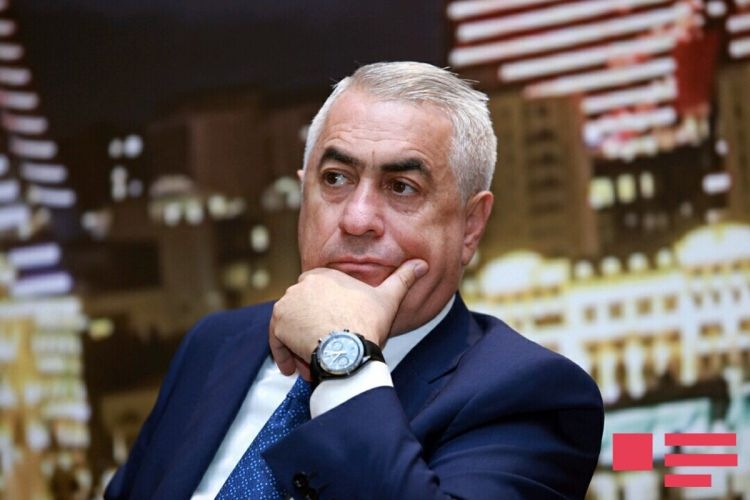


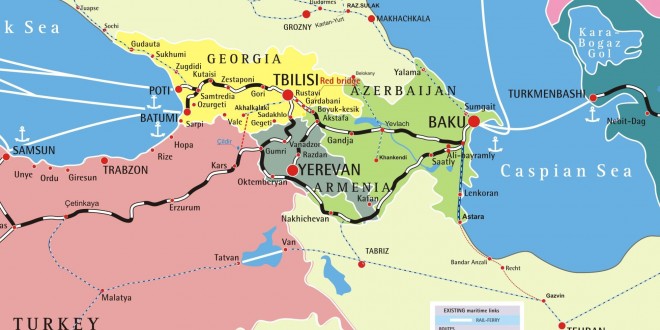



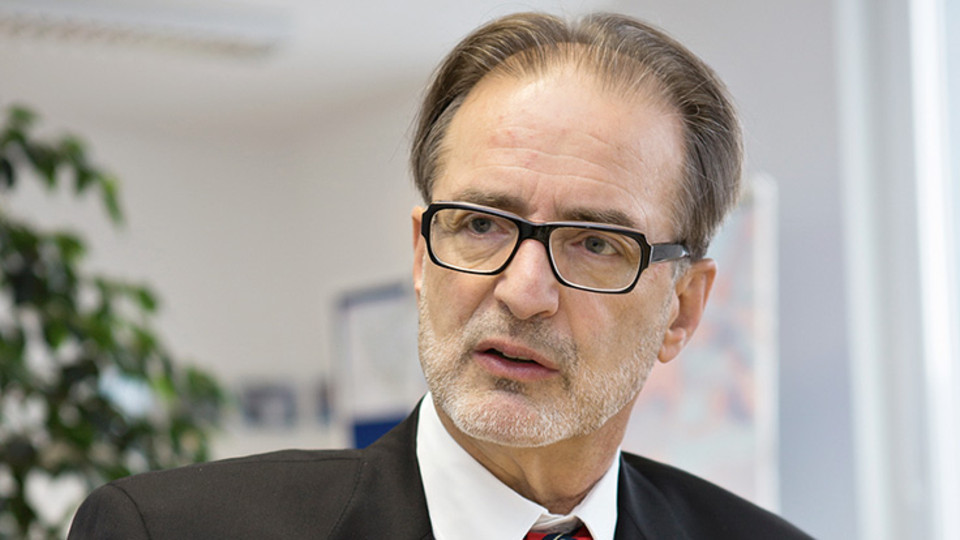
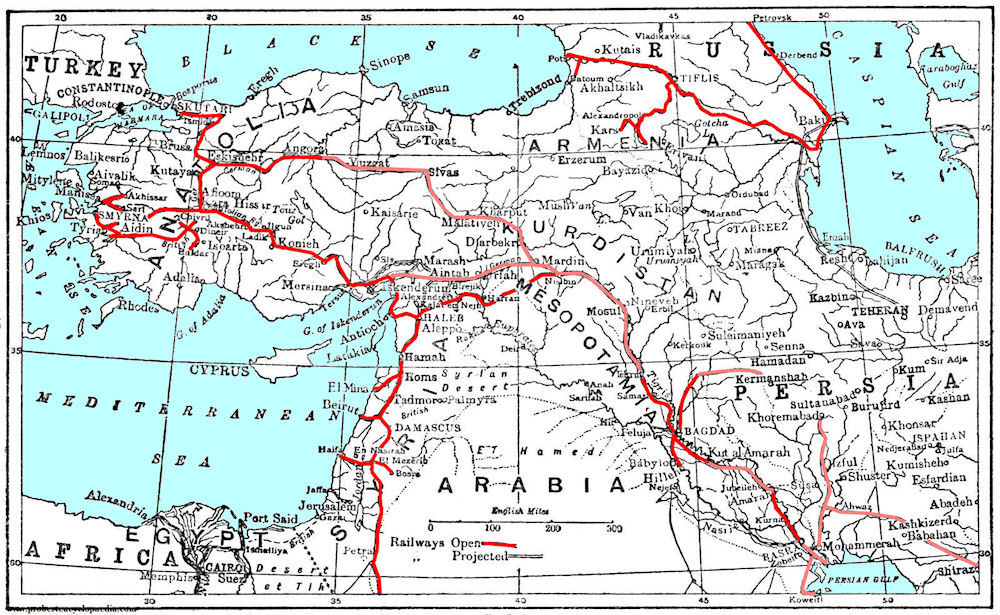
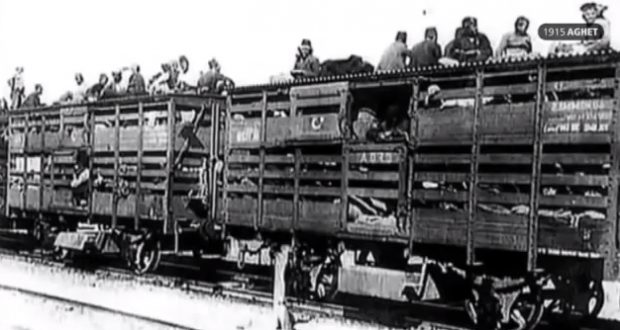
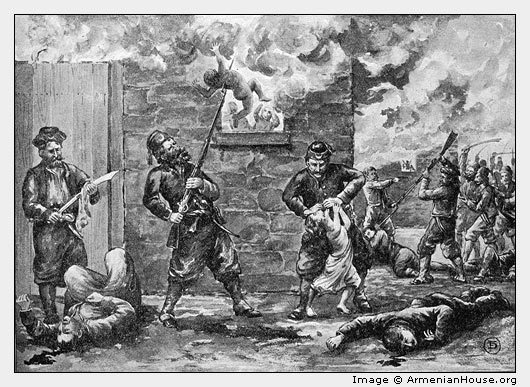
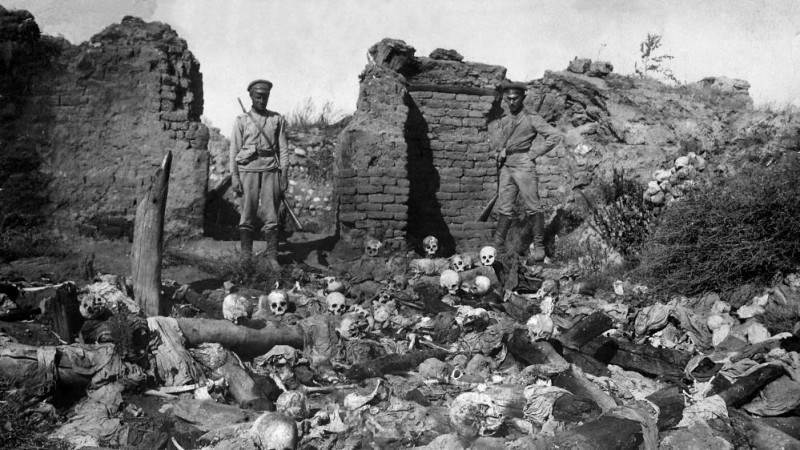
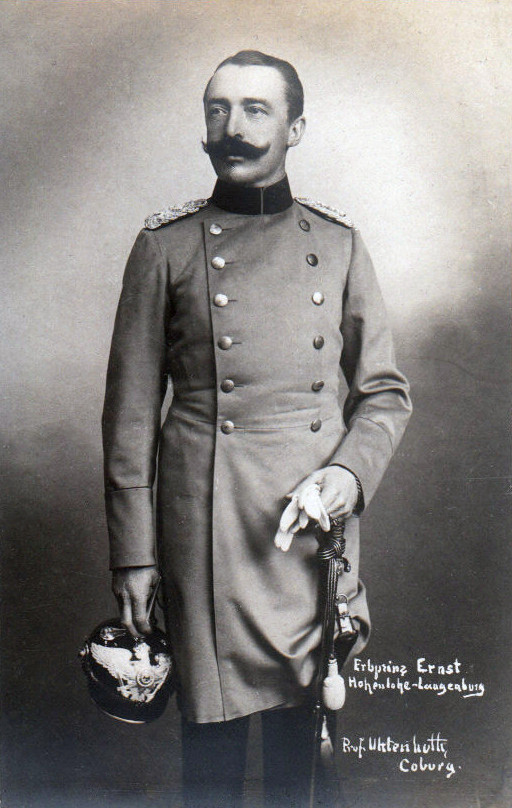
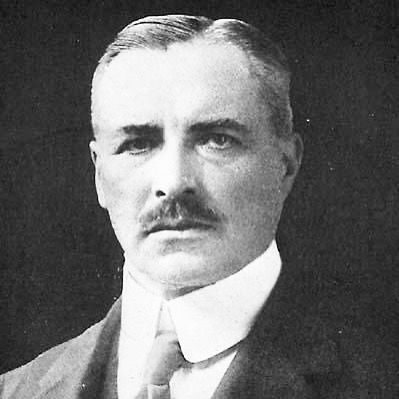
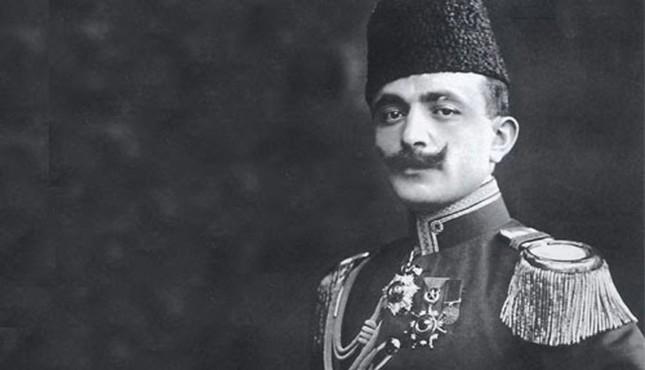
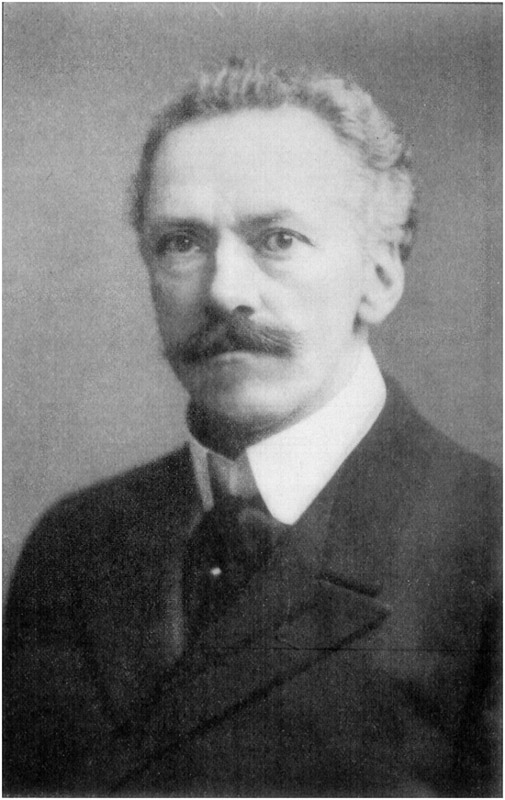


Comments are closed.